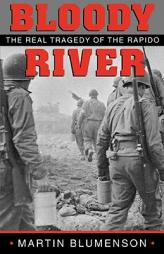
Details
Rent Bloody River: The Real Tragedy of the Rapido (Texas a & M University Military History Series)
Author:
Format: Quality Paperback
Publisher: Texas A&M University Press
Published: Jun 2008
Genre: History - Military - World War Ii
Retail Price: $17.95
Pages: 166
Synopsis
In the shadow of Monte Cassino on January 21-22, 1944, the U.S. Army's 36th 'Texas' Division tried to cross Italy's Rapido River. The rout of this former National Guard unit from Texas was one of the worst defeats Americans suffered on the battlefields of World War II, one that prompted veterans to present charges of incompetent leadership before Congress. In Bloody River, first published in 1970, Martin Blumenson presents his view of how the 'personal equation' figured into the debacle. Focusing on the generals responsible for the ill-fated attack, Blumenson traces key points in the personal profiles of the diffident 36th Division commander Fred L. Walker; Gen. Mark 'Wayne' Clark, the imperious commander of American ground forces; and the tactful and tactically gifted former cavalry officer Gen. Geoffrey T. Keyes, commander of II Corps and Walker's immediate superior. Walker, serving under the younger Clark and Keyes, witnessed the destruction of villages and the exhaustion of the non-Regular Army soldiers in his division. Blumenson argues that Walker, relatively far down the chain of command, saw his soldiers' and the civilians' suffering and lost confidence and respect for his superiors and constantly questioned their fitness to devise appropriate strategy and tactics. Despite reports of the severe situation in the Rapido Valley, General Clark, responsible for ensuring the success of the Anzio landing, would not cancel the 36th Division's supporting attack across the Rapido. In two days, the two front-line infantry regiments of the division suffered severe casualties, as did the attached units of engineers, quartermaster troops, and artillerymen. Meanwhile, General Clark'sAnzio landing was accomplished with relatively little resistance. Blumenson argues that Walker's pessimism about the Rapido attack plan may have permeated his troops and robbed them of their will to win. This concise survey of the command situations that led to the Rapido tragedy should be of interest to all readers who wish to learn the high-priced lessons of war in affordable and accessible form.
